Gordon Kane, Gordon Kane9789812779755, 9812779752, 9789812833891, 9812833897
This book provides an overview on the techniques that will be crucial for finding new physics at the LHC, as well as perspectives on the importance and implications of the discoveries. Among the accomplished contributors to this book are leaders and visionaries in the field of particle physics beyond the Standard Model, including two Nobel Laureates (Steven Weinberg and Frank Wilczek), and presumably some future Nobel Laureates, plus top younger theorists and experimenters. With its blend of popular and technical contents, the book will have wide appeal, not only to physical scientists but also to those in related fields.
Contents: The LHC — A Why Machine and a Supersymmetry Factory (G Kane); Dark Matter at the LHC (A Pierce); LHC s ATLAS and CMS Detectors (M Spiropulu & S Stapnes); Understanding the Standard Model, as a Bridge to the Discovery of New Phenomena at the LHC (M L Mangano); Thoughts on a Long Voyage (L Susskind); The “Top Priority” at the LHC (T Han); LHC Discoveries Unfolded (J Lykken & M Spiropulu); From BCS to the LHC (S Weinberg); Searching for Gluinos at the Tevatron and Beyond (J Alwall et al.); Naturally Speaking: The Naturalness Criterion and Physics at the LHC (G F Giudice); Prospects for Higgs Boson Searches at the LHC (K Jakobs & M Schumacher); A Review of Spin Determination at the LHC (L-T Wang & I Yavin); Anticipating a New Golden Age (F Wilczek); Strongly Interacting Electroweak Theories and Their Five-Dimensional Analogs at the LHC (A Pomarol); How to Find a Hidden World at the LHC (J D Wells); B Physics at LHCb (M P Altarelli & F Teubert); The LHC and the Universe at Large (P Binétruy).
Table of contents :
Preface……Page 8
1. The LHC — A “Why” Machine and a Supersymmetry Factory G. Kane……Page 16
1.1 A “Why”Machine……Page 18
1.2 A Superpartner Factory……Page 20
1.3 Our String Vacuum……Page 24
1.4 After the Champagne……Page 25
2.2 Weighing the Universe, or Why Expect Dark Matter?……Page 28
2.3 What is the DarkMatter?……Page 31
2.4 A Test Case: Supersymmetric Dark Matter……Page 33
2.4.1 Neutralinos at the LHC……Page 34
2.5 Simple DarkMatter……Page 35
2.7 Conclusions……Page 36
References……Page 37
3.1 Introduction……Page 40
3.1.1 LHC: The machine……Page 41
3.1.2 LHC: Figures of challenge……Page 46
3.2 Detection, Particles and Physics……Page 47
3.3 ATLAS and CMS……Page 52
3.3.1 ATLAS/CMS duality……Page 54
3.3.2 Magnet systems……Page 55
3.4.1 Inner detectors……Page 58
3.4.2 Calorimetry……Page 60
3.4.3 Muon detectors……Page 62
3.5 Trigger Architecture……Page 64
3.5.1 Googles of data and the grid……Page 65
References……Page 67
4.1 Introduction……Page 70
4.2 Signals of Discovery……Page 72
4.2.1 Mass peaks……Page 73
4.2.2 Anomalous shapes of kinematical distributions……Page 74
4.2.3 Counting experiments……Page 80
4.3 Measuring Parameters……Page 83
4.4 Conclusions……Page 85
References……Page 86
5.1 The Landscape……Page 90
5.2 The Hierarchy……Page 92
5.3 Linkages……Page 96
5.3.1 The strong CP problem……Page 98
5.5 Black Holes at the LHC?……Page 99
6.1 Brief Introduction……Page 102
6.2 Top Quark in The Standard Model……Page 103
6.2.1 Top-quark decay in the SM……Page 104
6.2.2.1. tt production via QCD……Page 105
6.2.2.2. Single top production via weak interaction……Page 106
6.2.2.3. Top quark and Higgs associated production……Page 107
6.3.1 Charged current decay: BSM……Page 108
6.3.2 Neutral current decay: BSM……Page 109
6.4.1 X tt, tb……Page 110
6.4.2 T tZ, tH, bW……Page 112
6.5.1 T T pair production……Page 113
6.5.1.1. tt pure hadronic decay……Page 114
6.5.1.2. tt semi-leptonic decay……Page 115
6.5.2 Exotic top signatures……Page 116
References……Page 117
7.1 Escape from Theory Space……Page 124
7.2 Dark Matter and Missing Energy……Page 127
7.3 Missing Energy at the LHC……Page 129
7.4 A Strategy for Early Discovery with Missing Energy……Page 132
7.5 Look-Alikes at the Moment of Discovery……Page 134
7.7 Spin Discrimination with 100 pb-1……Page 136
7.8 More Look-Alikes……Page 138
7.9 Simple Robust Discriminators……Page 144
References……Page 145
8. From BCS to the LHC S. Weinberg……Page 148
References……Page 157
9.1 Introduction……Page 158
9.2.1 Signal……Page 160
9.2.2 Backgrounds……Page 162
9.3 Projected Reach of Searches……Page 163
9.4 Implications for the LHC……Page 165
9.5 Conclusions and Outlook……Page 167
References……Page 169
10.1 Naturalness in Scientific Thought……Page 170
10.2 Drowning by Numbers……Page 172
10.3 A Quantum Complication……Page 176
10.4 The Naturalness Criterion as a Principle……Page 178
10.5 An Account of Events……Page 180
10.6 The Paths Chosen by Nature……Page 182
10.7 Measuring Naturalness……Page 185
10.8 Anthropic Reasoning……Page 187
10.9 Naturalness versus Criticality……Page 189
10.10 Conclusions……Page 190
References……Page 191
11.1 Introduction……Page 194
11.2 Higgs Boson Production and Decay……Page 196
11.3.1 Inclusive Higgs boson searches……Page 199
11.3.1.1. H ZZ() decays……Page 200
11.3.1.2. H decays……Page 201
11.3.1.3. H WW() decays……Page 202
11.3.2.1. qqH qqWW()……Page 203
11.3.2.2. qqH qq……Page 204
11.3.3 Higgs boson searches using the associated ttH production……Page 205
11.3.4 Combined signal significance……Page 206
11.4.1 Mass and total decay width……Page 208
11.4.2 Partial decay widths and couplings……Page 209
11.4.3 Spin and CP quantum number……Page 210
11.5 Search for MSSM Higgs Bosons……Page 211
11.5.2 Discovery potential in various benchmark scenarios……Page 212
11.6 Conclusions……Page 216
References……Page 217
12.1 Introduction……Page 220
12.2 Rate and Mass Measurement……Page 223
12.3 Angular Correlations in a General Decay Topology……Page 226
12.4 Mis-Pairing and Background……Page 227
12.5.1 Charged boson partner’s spin — Jet-W± correlations……Page 229
12.5.2 Charged boson partner’s spin — Jet-Z correlations……Page 231
12.5.3 Neutral boson partner’s spin……Page 232
12.6 Spin Determination of Standard Model Matter Partners……Page 233
12.6.2 Degenerate spectrum……Page 236
12.6.4 Long cascade decays and total spin determination……Page 237
12.7 Off.-Shell Decays……Page 239
12.7.1 Simulation tools to study spin correlations……Page 241
12.8 Conclusion and Outlook……Page 243
References……Page 244
13.1.1 Celebrating the standard model……Page 248
13.1.2 An unfinished agenda……Page 250
13.2.2 Minimal model and search……Page 251
13.3.1 Unification of charges……Page 252
13.3.2 Unification of couplings……Page 254
13.3.3 Unification SUSY……Page 256
13.3.3.1. Importance of the emergent scale……Page 258
13.4.1 Dark matter from supersymmetry……Page 261
13.4.2 “Mission accomplished”?……Page 262
13.4.2.1. Too much? — Superwimps……Page 263
13.4.2.2. Too little? — Axions……Page 265
13.5.1.1. Division and dilution……Page 268
13.5.1.2. An example: Mass from quantum mechanics……Page 269
13.5.2 Motivations for hidden sectors……Page 270
13.6 Summary and Conclusions……Page 271
References……Page 272
14.1 Introduction……Page 274
14.2.1 The original technicolor model. Achievements and pitfalls……Page 276
14.2.1.1. Flavour changing neutral current (FCNC) and the top mass……Page 277
14.2.1.2. Electroweak precision tests……Page 278
14.2.2 5D Higgsless models……Page 279
14.2.2.1. Holographic 4D interpretation of the 5D Higgsless models and the size of FCNC……Page 281
14.3 Composite HiggsModels……Page 283
14.3.1 Higgs potential and vacuum misalignment……Page 285
14.3.2 Fermionic resonances……Page 287
14.4.1 Heavy resonances at the LHC……Page 289
14.4.2 Experimental tests of a composite Higgs……Page 291
References……Page 295
15.1 Particle Physics in the LHC Era……Page 298
15.2 HiddenWorlds……Page 300
15.3 Hidden Abelian Higgs Model (HAHM)……Page 301
15.4 Precision Electroweak……Page 303
15.5 Example LHC Phenomena of HAHM……Page 304
15.6 Beyond the Standard Model and the Hidden World……Page 310
References……Page 312
16.1 Introduction……Page 314
16.2 b Physics at the LHC: Environment, Background, General Trigger Issues……Page 315
16.3 Detector Description and Performance……Page 317
16.3.1 Trigger……Page 318
16.3.2 VELO and tracking system……Page 320
16.3.3 Particle identification……Page 321
16.4 Physics Objectives……Page 322
16.4.1 Introduction of formalism……Page 323
16.4.2 Measurement of the Bs mixing phase……Page 324
16.4.3 Bs as a probe for new physics……Page 326
16.4.4 Measurement of the weak decay-phase γ from tree-level processes……Page 327
16.4.5 Example of radiative penguins: Bs……Page 330
16.4.6 Example of an electroweak penguin: B……Page 331
16.4.7 Example of a Higgs-penguin: Bs……Page 333
16.5 Conclusions and Outlook……Page 334
References……Page 335
17.1 Introduction……Page 338
17.2 The Dark Side of LHC……Page 339
17.3 The Gravitational Side of LHC……Page 345
17.3.1 Phase transitions at the terascale: the LHC-LISA connection……Page 346
17.3.2 Black hole physics and the LHC……Page 348
17.4 Conclusion……Page 350
References……Page 351
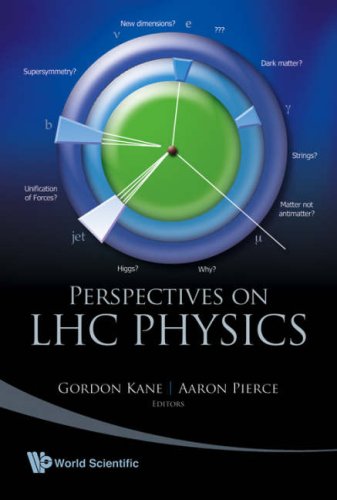
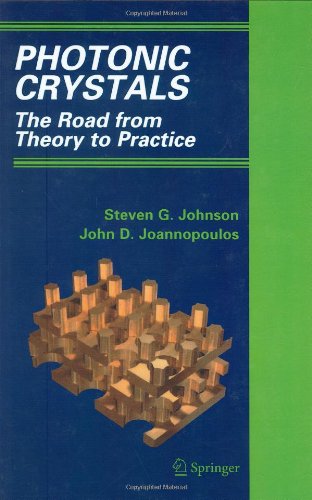


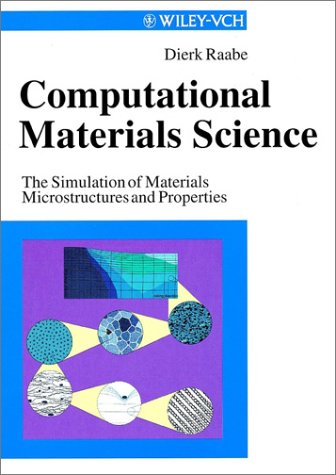
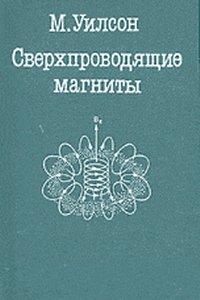
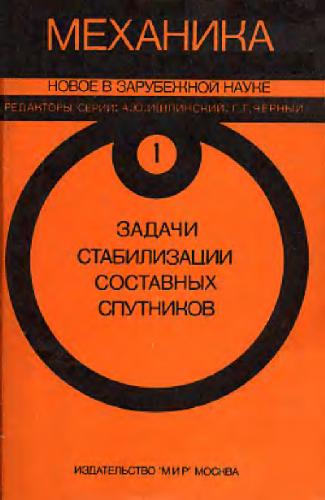
Reviews
There are no reviews yet.